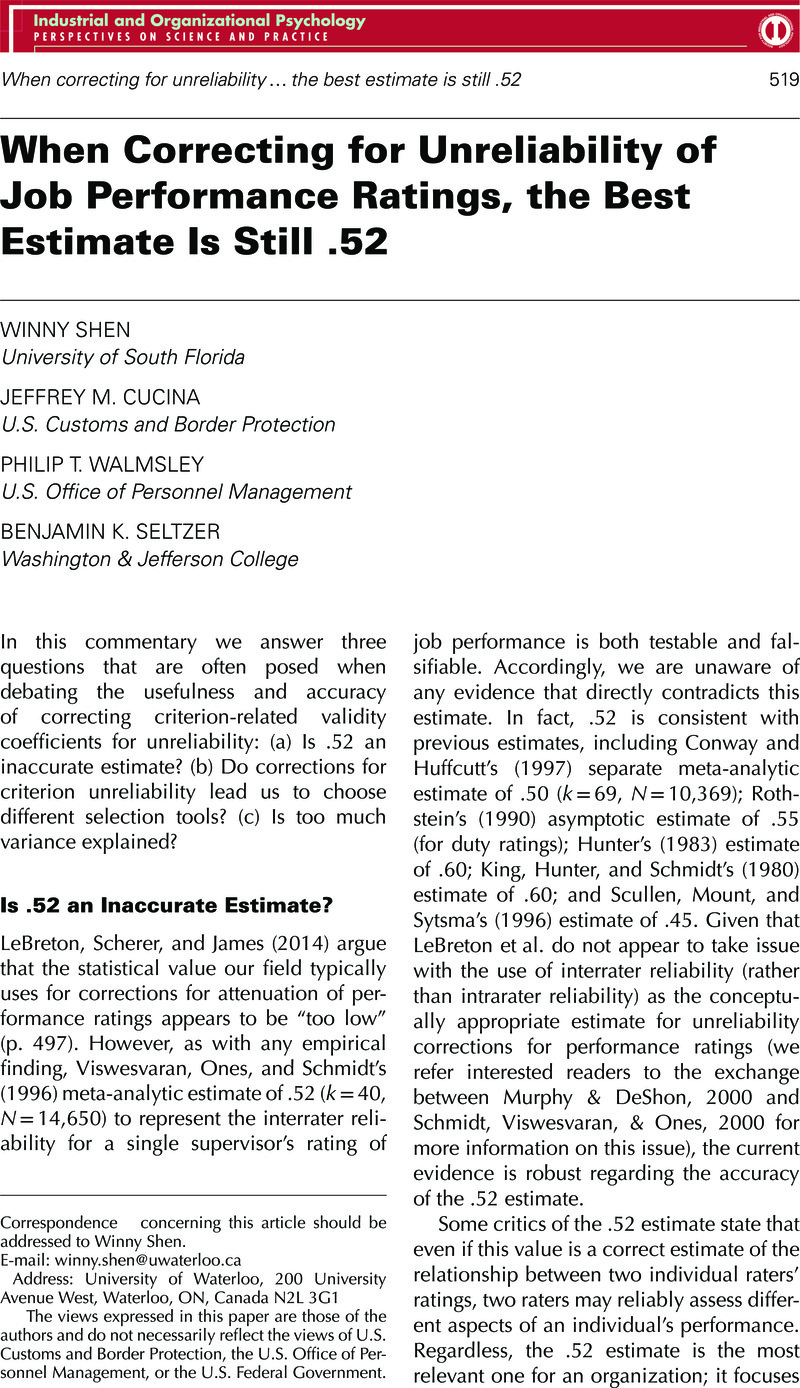Hutchinson, D.,
Shen, W.,
Telford, B.,
Andel, S.,
Jang, S., &
Ramsay, S. (
2014, May).
Personality and justice perceptions: An updated meta-analysis. Paper presented at the 29th Annual Conference of the Society for Industrial and Organizational Psychology, Honolulu, HI.
Google Scholar 